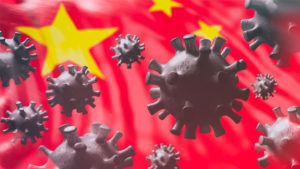How Will Coronavirus Affect Manufacturing in China?
This story was updated Feb. 5. See an update to this story on Feb. 11 here.
Some Chinese businesses reopened Monday after the Lunar New Year Holiday, but many non-essential businesses remained closed to help stem the spread of coronavirus.
Authorities extended the holiday break through Feb. 2, an extra three days to help mitigate mass travel and slow the return to normalcy that could help the coronavirus to spread.
But at least 24 of China’s 31 provinces, municipalities, and autonomous regions, including Beijing and Shanghai, have told businesses not to reopen before Feb. 10 at the earliest. Most organizations, except those serving daily needs such as utility companies, and medical equipment and pharmaceutical firms, remained closed, the South China Morning Post reported Tuesday.

As factories shutter for another week, industries of all kinds evaluate potential supply chain disruptions, from electronics and durable goods to raw materials and chemistries. The uncertainty is flaming economic concerns that manifested Monday as a $445-billion selloff in Chinese stock markets before rebounding today. Stocks on Wall Street followed the upward swing Tuesday on news that China had infused another $70 billion into the country’s financial systems in addition to the $170 billion it pumped into money markets on Monday.
Investors and economists, still dealing with the uncertainty of a bilateral trade deal with the U.S., now have a new set of uncertainties to manage, primarily the length and severity of the spread of the coronavirus.
Here is the major concern: Unlike the influenza virus that has a predictable surge in winter months and historical decline in April and May, researchers simply do not know if coronavirus has a cyclical nature or will continue to spread during the summer. This unknown cycle, along with continued epidemiological considerations like the infection rate and mortality rate, have created a perfect storm of insecurity for investors and governments.
The New York Times reported Tuesday that China’s economic growth is expected to slip this year to 5.6%, down from 6.1% last year, according to a conservative forecast from Oxford Economics that is based on the impact of the virus so far. That would, in turn, reduce global economic growth for the year by 0.2%, to an annual rate of 2.3% — the slowest pace since the global financial crisis a decade ago.
How it affects the supply chain and AgChem: Hyundai announced Tuesday that it was forced to halt production due to supply chain issues, and other industries eye potential disruptions.
David Li, Business Manager for Beijing-based SPM Biosciences and Editorial Advisor of AgriBusiness Global, said Feb. 4 that the extension of the national holiday and slow restart of factories in early February “will not affect key AI supply because of inventory from local manufacturers.”
However, as quarantines continue this week, road closures persist preventing the shipment of people and goods around China, and factories continue to be idle, many industry observers expect supply disruptions to become more pronounced next week and well into March. As supply tightens, prices will climb, and contracts could be rendered obsolete as manufacturers try to recoup losses with the higher prices from a new supply/demand dynamic.
Of course, this is all developing quickly. For now, the Chinese government is making significant strides to manage and contain coronavirus and limit its domino effect on China’s ability to be the supermarket of the world.
In Wuhan, the epicenter of the virus, a temporary hospital was built in 10 days to help treat infected patients and quarantine those who are sick. International aid is pouring into China, and agriculture drone manufacturer XAG has set up a fund to help train independent drone operators to help disinfect affected areas.
Sign up for our newsletter to stay up to date on all developments in crop input supply and demand trends.






